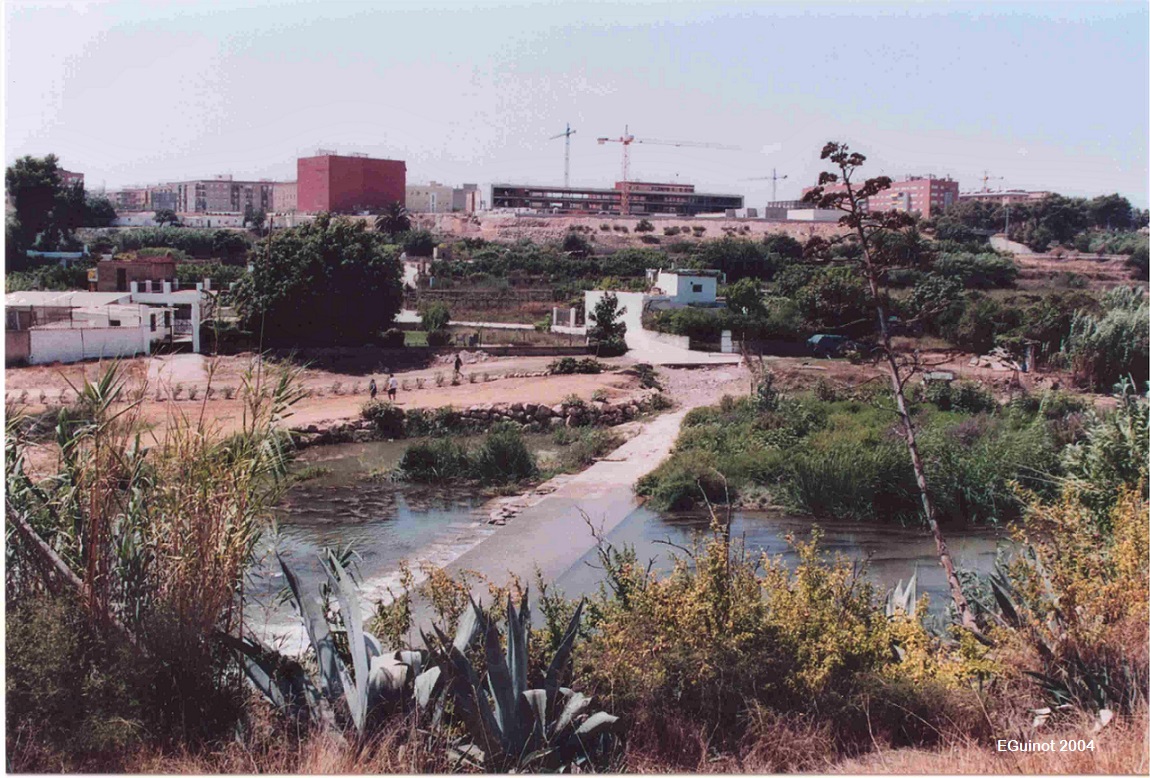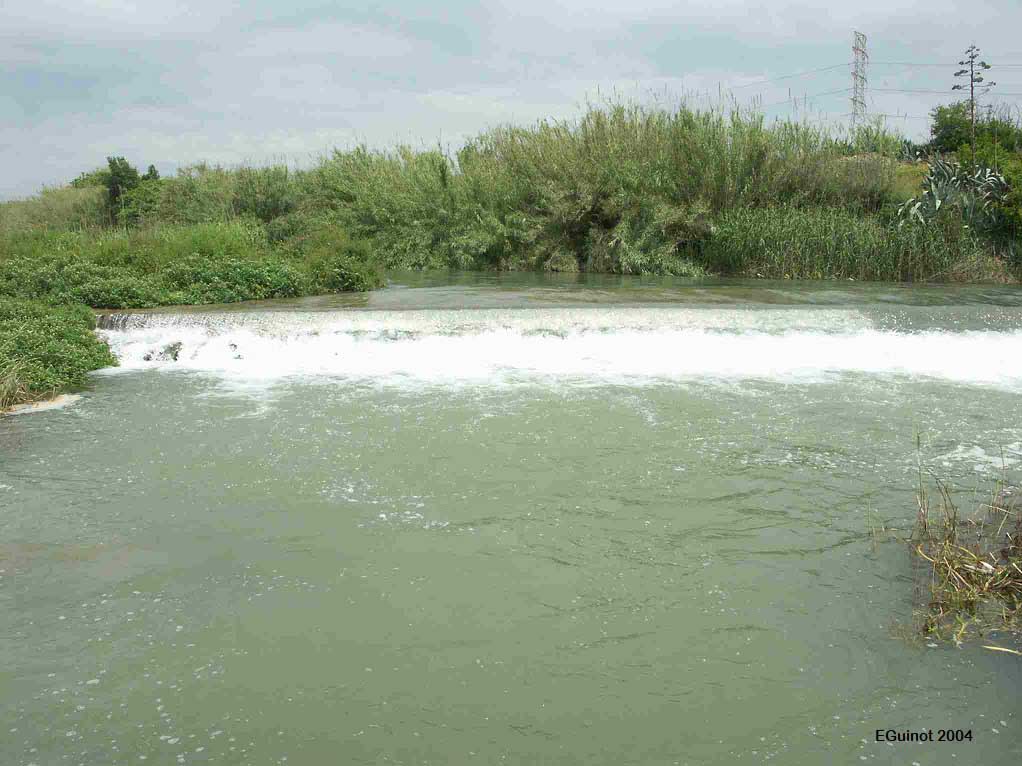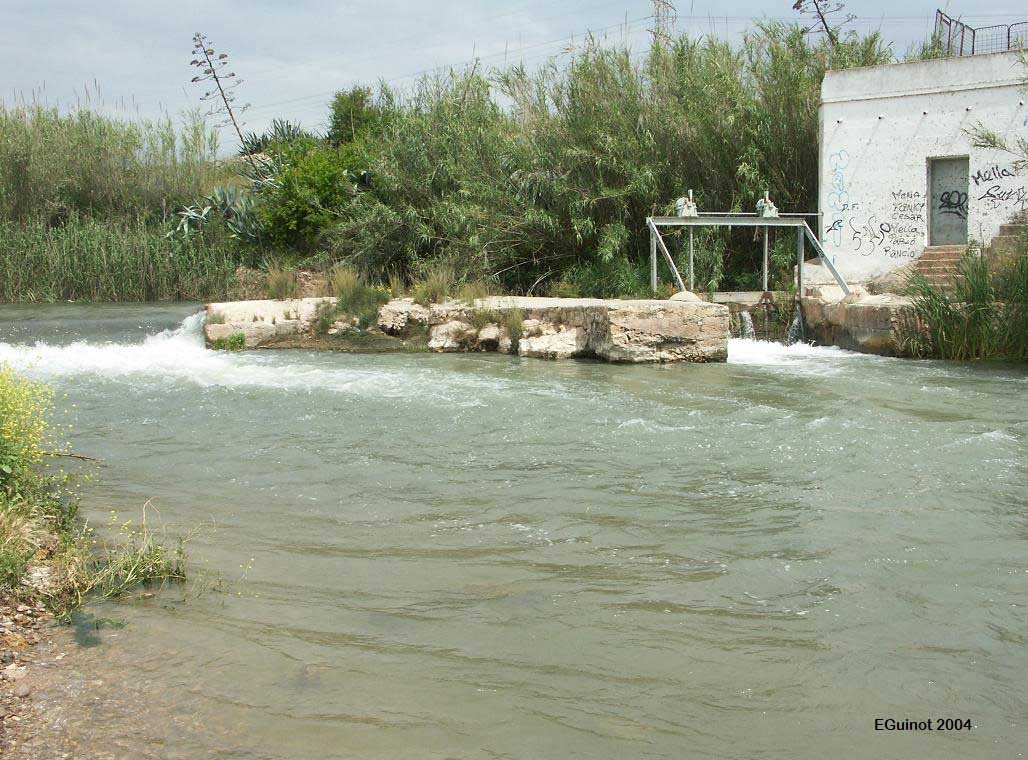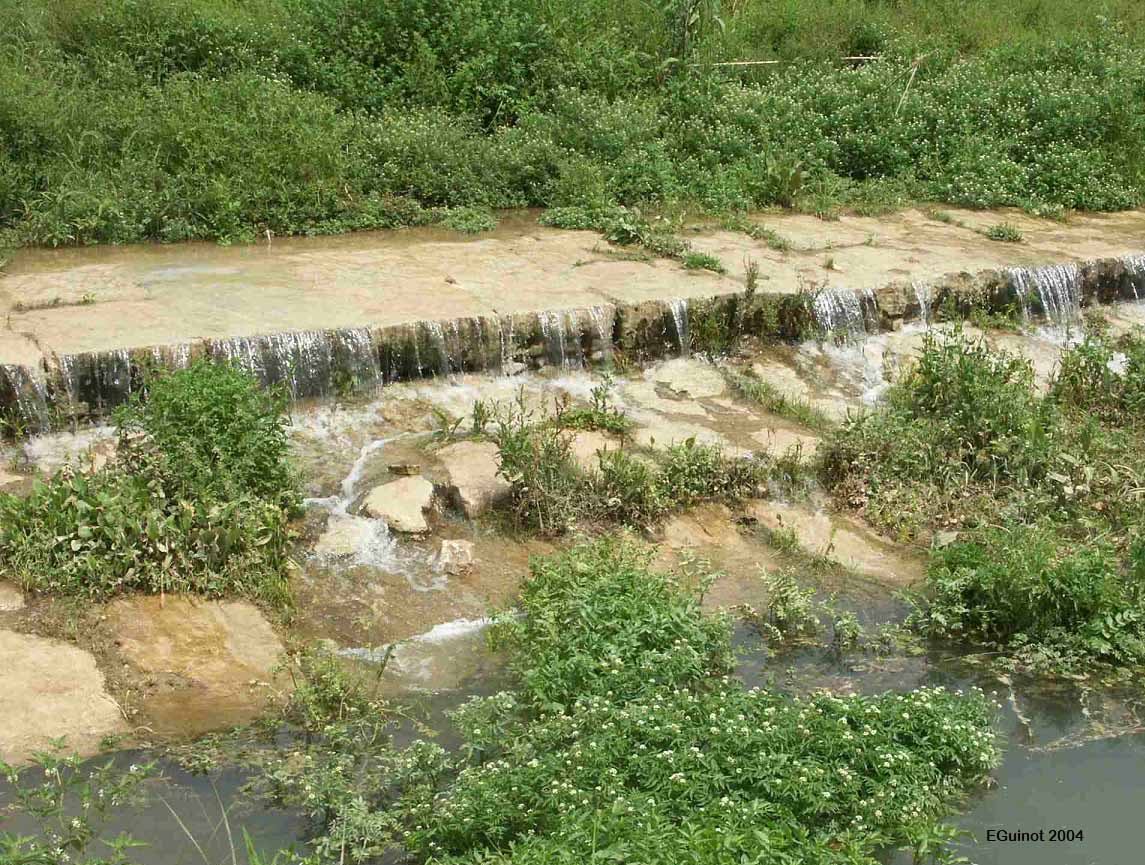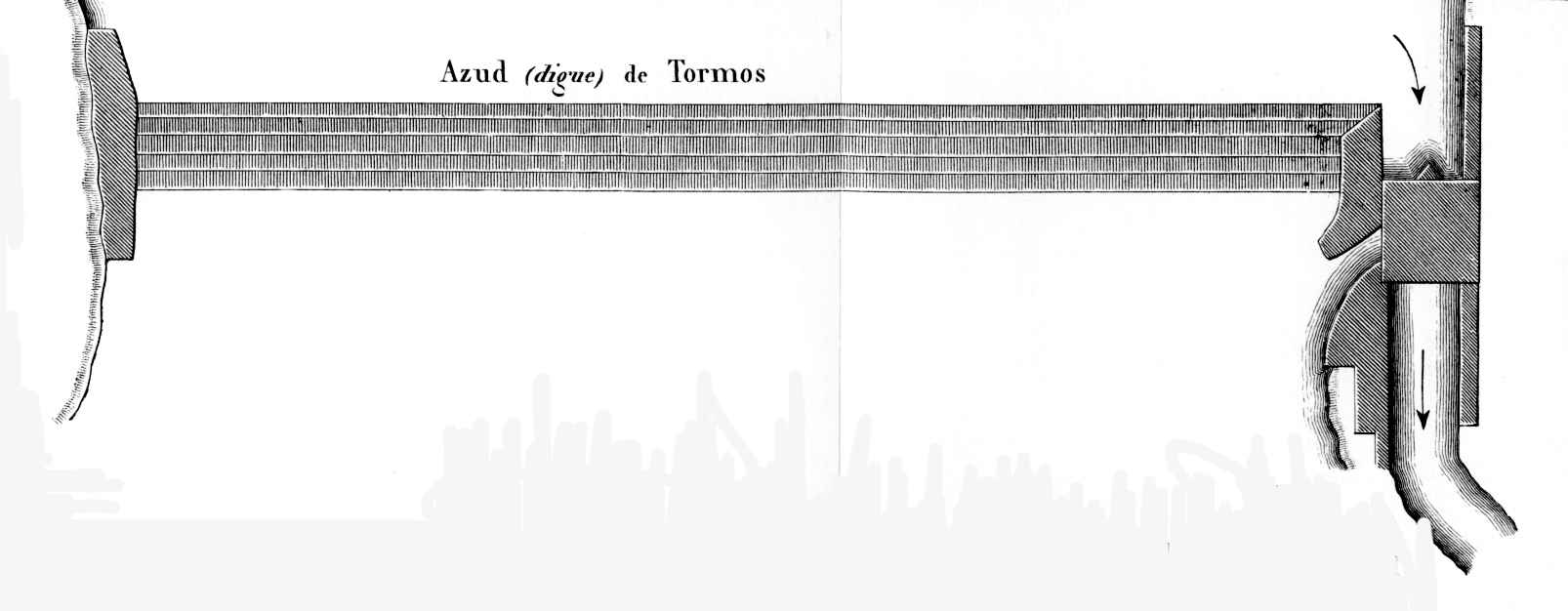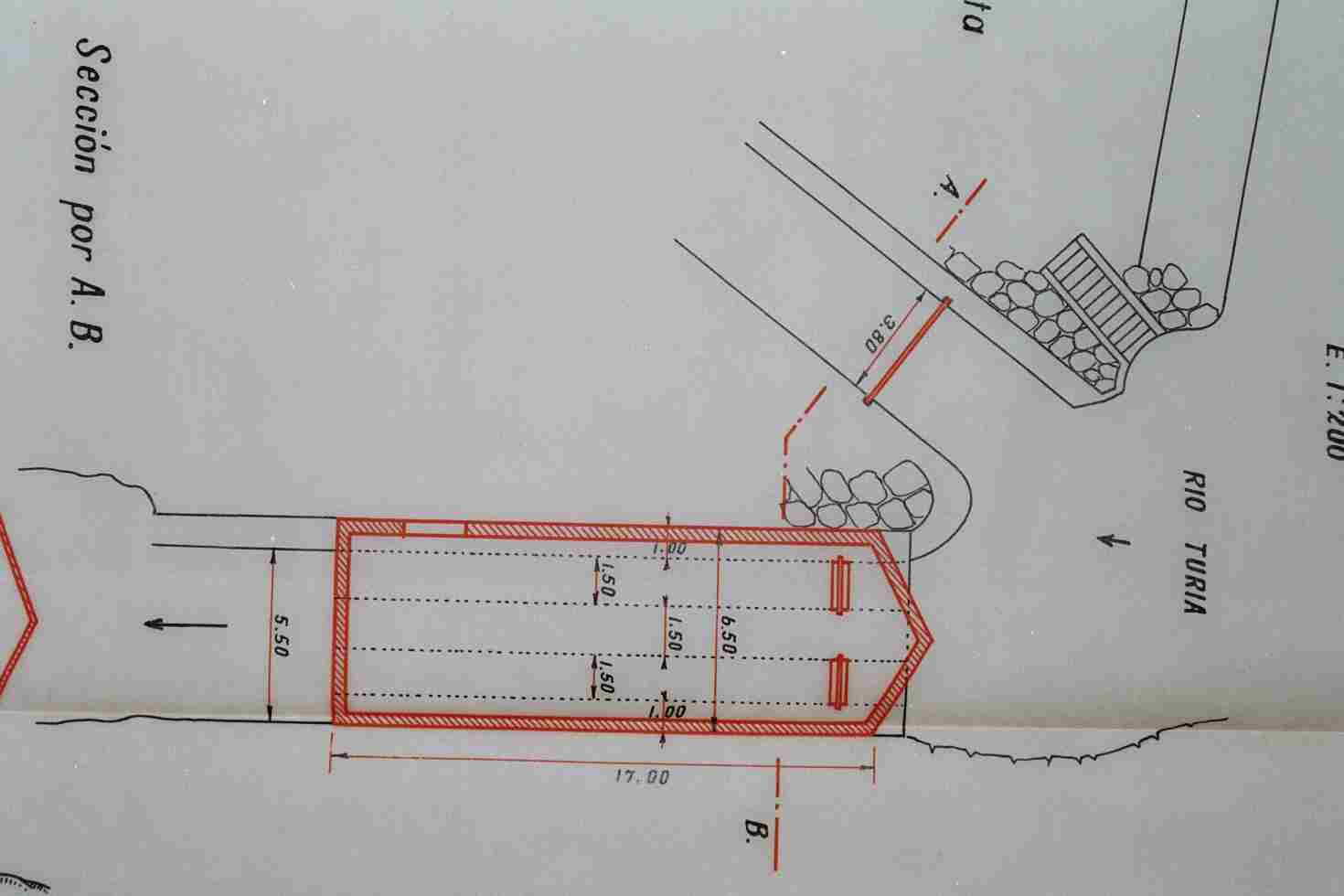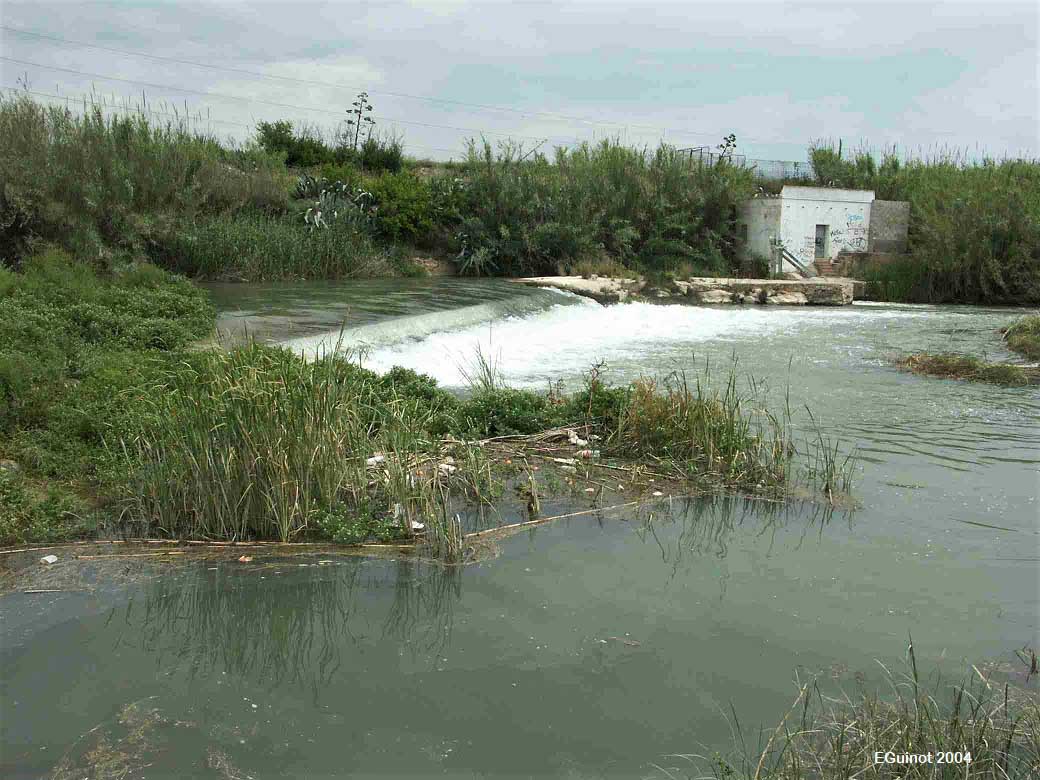
It can be reached via a rural road that goes past the Tandera mill in Paterna, in the direction of the river, bordering the fields. However, the easiest access is by going directly down to the river from the town centre of Manises, along Carrer Joan XXIII and walking down to the river along the Cuevas Altas road-street.
The diversion weir itself is worn out by the water but it is fairly well maintained. The discharge channel, gorges and gate house are in good condition and are later discharge channel and gates to the flood of 1957.
Originally built in the 9th-10th centuries, they were made of stone from the 17th century onwards and rebuilt several times until the 20th century.
According to Guinot and Selma (2005) and Selma (2014), it is from the Islamic period prior to the 13th century, at least in terms of location, as it is essential for the functioning of the Tormos irrigation canal and could reasonably be attributed to the 10th-11th centuries. The great transformation dates back to the end of the 16th century and the beginning of the 17th century when, as in the other diversion weirs in l’Horta (the irrigated land of València), they were first made of ashlars and stone slabs. The diversion weir has always been owned, used and repaired by the community of irrigation owners of this irrigation canal, and the archives preserve some information about works from the 17th century onwards. In fact, until the 20th century, there have been several floods that have periodically caused damage and the resulting repairs have been carried out. For example, the one that took place in 1870: “the gate house of the Tormos irrigation canal has been demolished, the irrigation canal has been blocked with some breakages ...” (Arxiu Dip.Provincial .València, E.3.1., caixa 320, exp. 7356), or those that had to be carried out after the flood of 1957: the gate house was practically destroyed, except for the arches, as well as the brick vaults that covered the irrigation canal at its beginning which were rebuilt in March 1958.
According to Guinot and Selma (2005) and Selma (2014), the Tormos diversion weir is a traditional construction made of large ashlars and rectangular stone slabs of large size, mortared together to form a dam perpendicular to the Túria River. It has the characteristic shape of a staircase with large steps, aligned slightly obliquely to the flow of the water to facilitate its entry into the gorges and the entrance to the irrigation canal. The set of visible steps is more than 3 m (9ft 10.1 in) wide and 75 m (246ft 0.7 in) long, while the part that receives the flow of the river is more vertical. The water is diverted along the left side of the river into the Tormos irrigation canal. It flows between a wall built on rocky remains and the compacted sediments of the hillside, until it reaches the two gorges that give access to the irrigation canal outlet and the discharge channel, which returns the surplus water that does not belong to the irrigation canal. The gorges, separated by a stone spur, have wooden sluice gates and are operated in turn to regulate the water. On the other hand, the discharge channel has side walls made of large ashlars and lime masonry, with the original intention of making a solid construction.
Tribunal de les Aigües
Declared an Asset of Local Relevance as a result of the Legislative Decree 73/2006, of 26th May, by which the Tribunal de les Aigües of the Vega de València was declared as an Asset of Intangible Cultural Interest.
- Plan de Acción Territorial de Protección de la Huerta de Valencia. Versión Preliminar. Memoria de Ordenación. Anexo. Fichas de Elementos de Arquitectura Hidráulica. Índice de Fichas, (dir. Arancha Muñoz), Generalitat Valenciana, 2008, EPH_11.02, p. 176.
- Pla General Ordenació Urbana de Paterna: Catàleg de Patrimoni (Modificació de l’any 2011). Autors de l’informe: Vicent Garcia Martínez i Adrià Bessó, pp. 25-29.
- Pla d’Acció Territorial d’Ordenació i Dinamització de l’Horta de València (PAT de l’Horta). Generalitat Valenciana, 2018. Catàleg annex. Element Patrimonial EPH_11.03, pp. 475-476.
- Inventari General del Patrimoni Cultural Valencià, Conselleria de Cultura, Generalitat Valenciana, Béns del Catàleg d’Etnologia, fitxa: “Assut de Tormos”.
- Hermosilla, J. (dir.): El patrimonio hidráulico del Bajo Turia. L’Horta de València, València, Direcció General de Patrimoni Cultural-Generalitat Valenciana, 2007, fitxa n. 62, p. 411.
- Inventari General del Patrimoni Cultural Valencià, Conselleria de Cultura, Generalitat Valenciana, Béns del Catàleg d’Etnologia, fitxa: “Assut de Tormos”. Autors: Lloria, R., Selma, S., Guinot, E.
- GUINOT, E.; SELMA, S. (2005): Les séquies de l’Horta Nord de València: Mestalla, Rascanya i Tormos, Col·leció Camins d’Aigua n. 6, València, Conselleria d’Agricultura de la Generalitat Valenciana, pp. 141-143.
- SELMA CASTELL, Sergi (2014). Paisatges històrics, patrimoni i didàctica. (Les séquies i les hortes del Tribunal de les Aigües de València). Tesi doctoral publicada en PDF. Castelló, Universitat Jaume I de Castelló, pp. 417.
- GUINOT, E.; SELMA, S., LLORIA, R. (2003). El patrimoni hidràulic de les séquies del Tribunal de les Aigües de València. Informe elaborat per a la Direcció General de Patrimoni de la Generalitat Valenciana, Conselleria de Cultura, València.
- HERMOSILLA, J. (Coord.). El patrimonio hidráulico del Bajo Turia. L’Horta de València. València, Direcció General de Patrimoni Cultural-Generalitat Valenciana, 2007.
Photos: E.Guinot



